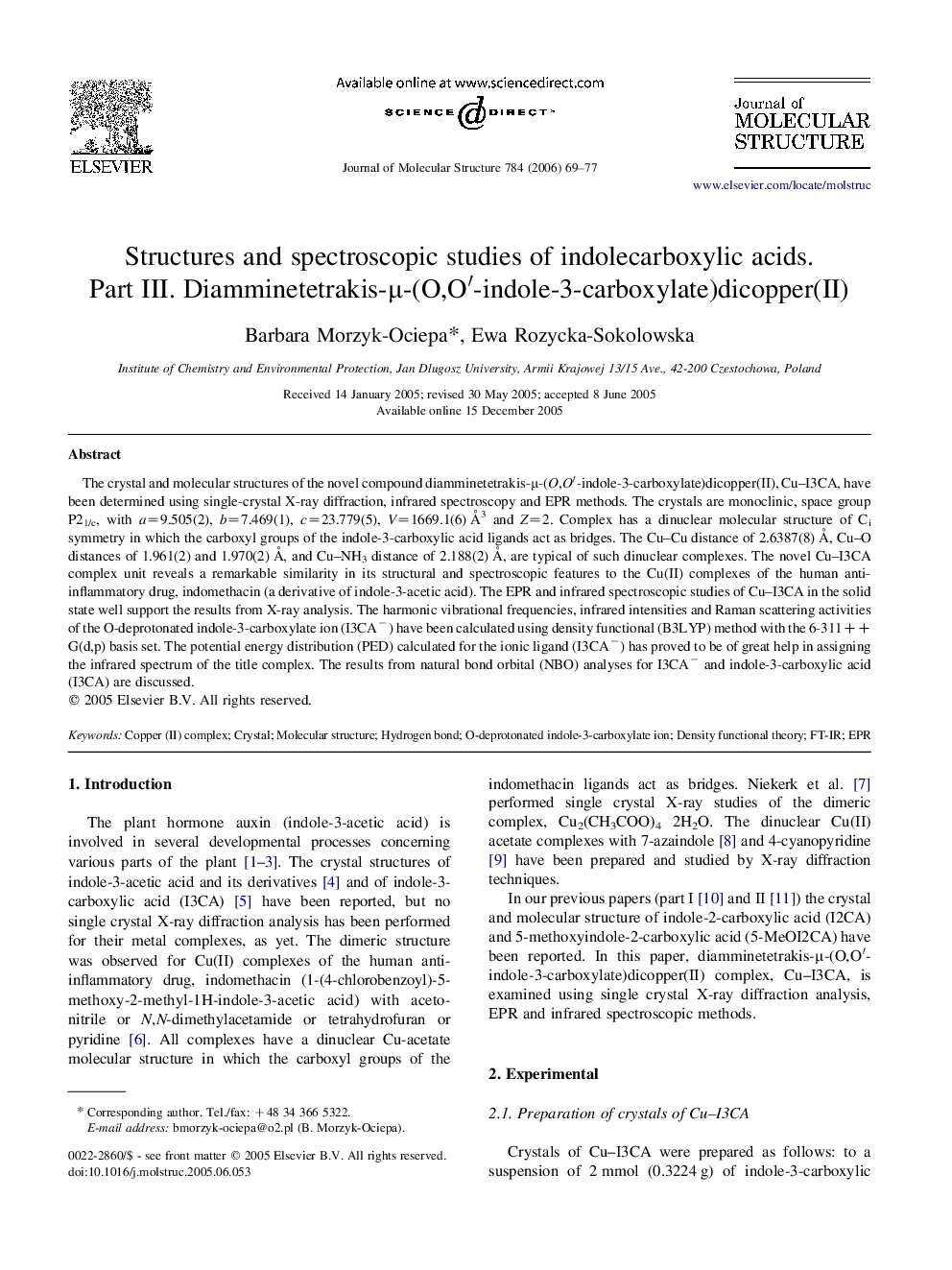| کد مقاله | کد نشریه | سال انتشار | مقاله انگلیسی | نسخه تمام متن |
|---|---|---|---|---|
| 1408382 | 1501927 | 2006 | 9 صفحه PDF | دانلود رایگان |

The crystal and molecular structures of the novel compound diamminetetrakis-μ-(O,O′-indole-3-carboxylate)dicopper(II), Cu–I3CA, have been determined using single-crystal X-ray diffraction, infrared spectroscopy and EPR methods. The crystals are monoclinic, space group P21/c, with a=9.505(2), b=7.469(1), c=23.779(5), V=1669.1(6) Å3 and Z=2. Complex has a dinuclear molecular structure of Ci symmetry in which the carboxyl groups of the indole-3-carboxylic acid ligands act as bridges. The Cu–Cu distance of 2.6387(8) Å, Cu–O distances of 1.961(2) and 1.970(2) Å, and Cu–NH3 distance of 2.188(2) Å, are typical of such dinuclear complexes. The novel Cu–I3CA complex unit reveals a remarkable similarity in its structural and spectroscopic features to the Cu(II) complexes of the human anti-inflammatory drug, indomethacin (a derivative of indole-3-acetic acid). The EPR and infrared spectroscopic studies of Cu–I3CA in the solid state well support the results from X-ray analysis. The harmonic vibrational frequencies, infrared intensities and Raman scattering activities of the O-deprotonated indole-3-carboxylate ion (I3CA−) have been calculated using density functional (B3LYP) method with the 6-311++G(d,p) basis set. The potential energy distribution (PED) calculated for the ionic ligand (I3CA−) has proved to be of great help in assigning the infrared spectrum of the title complex. The results from natural bond orbital (NBO) analyses for I3CA− and indole-3-carboxylic acid (I3CA) are discussed.
Journal: Journal of Molecular Structure - Volume 784, Issues 1–3, 20 February 2006, Pages 69–77